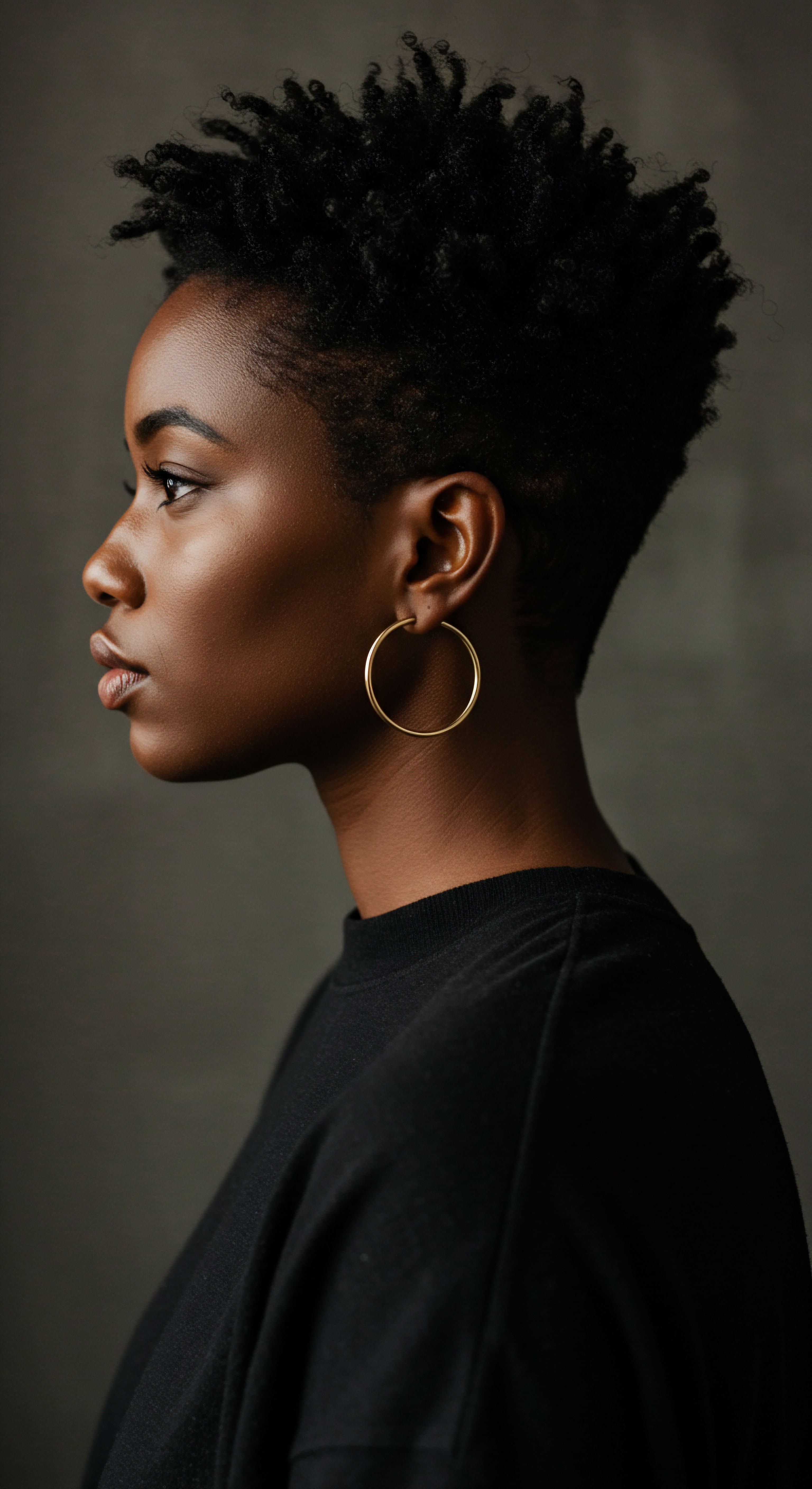
Roots
The story of our strands, a living chronicle of identity and expression, often leads us down paths less traveled, particularly when seeking to adorn them with the earth’s own palette. A quiet query often arises in the gentle spaces where science meets ancestral wisdom ❉ can the very spirals and coils that define our textured crowns shift under the tender touch of natural pigments? This is not a simple question with a single answer, for the hair’s intimate response to external influences is a symphony of complex interactions. Understanding this begins at the very core of what hair is, and how these natural colorants truly interact with its delicate architecture.
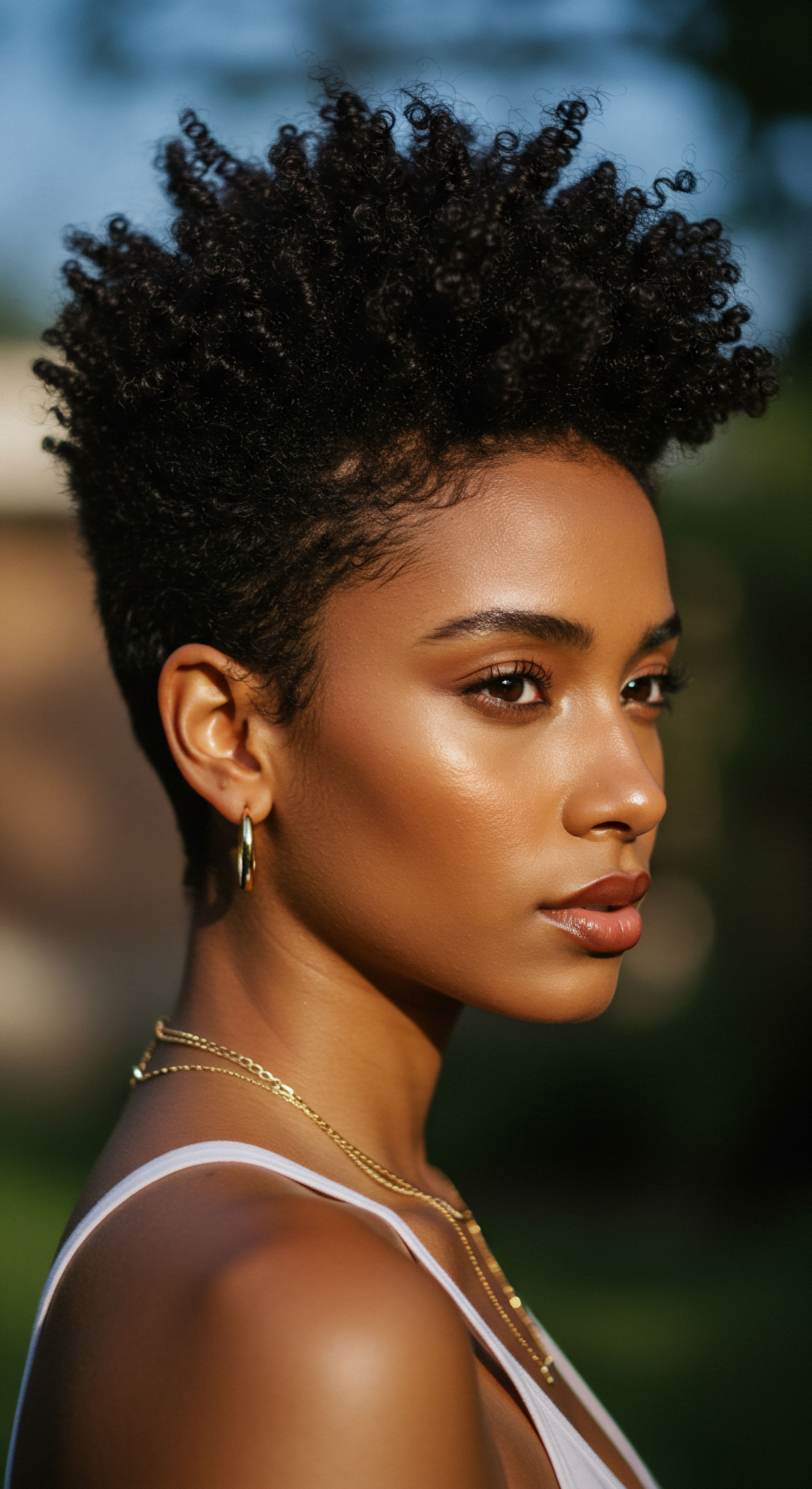
The Architecture of a Curl
At its heart, hair is a protein filament, primarily composed of keratin. For textured hair, this keratin is arranged in a unique way, creating the characteristic twists and turns we admire. The shape of the hair follicle itself plays a primary role; an oval or elliptical follicle produces curlier strands, while a round follicle tends toward straightness. Beyond the follicle’s influence, the very structure of the hair shaft holds the secret to its shape.
Within the cortex, the central part of the hair, lies a network of chemical bonds that dictate its flexibility and resilience. These bonds are the architects of our curl patterns.
- Disulfide Bonds ❉ These are the strongest of the hair’s internal connections, formed between sulfur atoms in adjacent protein chains. They provide the hair’s structural integrity and permanent shape. Chemical treatments like perms work by breaking and reforming these bonds to alter the curl.
- Hydrogen Bonds ❉ Weaker than disulfide bonds, these are temporary connections that are easily broken by water and heat. They contribute to hair’s elasticity and moisture properties, and their temporary disruption allows for styling changes like straightening with heat, only for the curl to return when moisture is reintroduced.
- Salt Bonds ❉ Also relatively weak, these bonds are formed between amino acid chains and contribute to the hair’s strength. Like hydrogen bonds, they are susceptible to changes in pH.
The unique distribution and interplay of these bonds within textured hair contribute to its inherent strength, its delightful bounce, and sometimes, its thirst for moisture. The cuticle, the outermost protective layer, consists of overlapping scales. When these scales lie flat, hair appears smooth and shiny. When raised, hair can feel rougher and appear dull.

What Natural Dyes Offer
Natural dyes, often derived from plants like henna, indigo, and various barks or roots, present a gentle alternative to synthetic chemical colorants. Unlike many conventional dyes that use ammonia and hydrogen peroxide to forcefully open the hair cuticle and penetrate the cortex, natural dyes typically work differently. Many natural pigments, such as lawsone from henna, tend to coat the hair shaft or deposit within the outermost layers of the cortex without fundamentally disrupting the hair’s core chemical bonds.
This difference in mechanism is a primary reason why the question of curl alteration arises. If a dye primarily coats the hair, its impact on the internal structure responsible for curl would theoretically be minimal. However, the story is more nuanced than a simple surface coating, as even subtle interactions can have cascading effects on the hair’s overall presentation. The beauty of these plant-based colorants lies in their ability to impart color while often conditioning the hair, adding a layer of natural goodness.
The intricate dance of hair’s internal bonds dictates its curl, while natural dyes typically interact with its outer layers.
The journey of hair coloring, from ancient rituals to modern applications, has always been intertwined with a quest for beauty and identity. Henna, for instance, has a rich history spanning thousands of years, used by ancient Egyptians not only for coloring hair a reddish-brown but also for medicinal and ceremonial purposes. Romans used walnut extracts for black hues, and various cultures experimented with plant extracts to achieve desired shades.

Hair’s Delicate Chemistry
The pH balance of hair is around 4.5 to 5.5, a slightly acidic state that helps keep the cuticle smooth and sealed. Many natural dyes, especially when prepared with acidic mediums like lemon juice or apple cider vinegar to release their pigments, can temporarily alter this pH. While a brief shift might help the dye molecules settle, prolonged exposure to highly acidic or alkaline conditions could potentially influence the hair’s cuticle.
The cuticle’s condition directly impacts how light reflects, how moisture is retained, and how individual strands interact with one another. A change in cuticle smoothness or integrity, even if the internal bonds remain untouched, could visually affect the appearance of curl definition.
The precise interaction depends on the specific plant, its preparation, and the individual hair’s unique characteristics. This delicate balance highlights why careful consideration of ingredients and preparation methods is paramount when using natural dyes on textured hair.

Ritual
Stepping from the foundational understanding of hair’s architecture, we now turn our attention to the deliberate practices that shape our textured strands, particularly when inviting the earth’s colors to join their story. The application of natural dyes is often more than a mere cosmetic act; it is a ritual, a mindful process that can profoundly influence the outcome, including the perceived shape of our curls. The practical wisdom gathered through generations of natural hair care, combined with scientific observation, offers insights into how these rituals can either preserve or subtly alter the beloved curl pattern.

The Application’s Caress
The physical application of natural dye pastes, such as those made from henna or indigo, can be a significant factor in how curls behave afterward. These pastes, often thick and clay-like, are typically applied section by section, saturating the hair from root to tip. The act of smoothing the paste onto the strands, especially when done with a degree of tension or repeated combing, can temporarily stretch the natural curl. While the hair is wet and coated with the paste, it is more pliable.
If left in a stretched state for an extended period, the temporary hydrogen bonds within the hair can reform in this elongated configuration. Upon rinsing and drying, the curl might appear less defined or slightly looser than its usual state.
Consider the anecdotal observations within the textured hair community ❉ many report a temporary loosening of curl after henna application, which often reverts over several washes. This suggests a physical effect rather than a permanent chemical alteration of the disulfide bonds that set the curl’s true shape. The weight of the paste itself can also play a role, pulling down the curls and causing them to appear elongated. As the hair dries with the dye on, this weight can contribute to a stretched appearance.
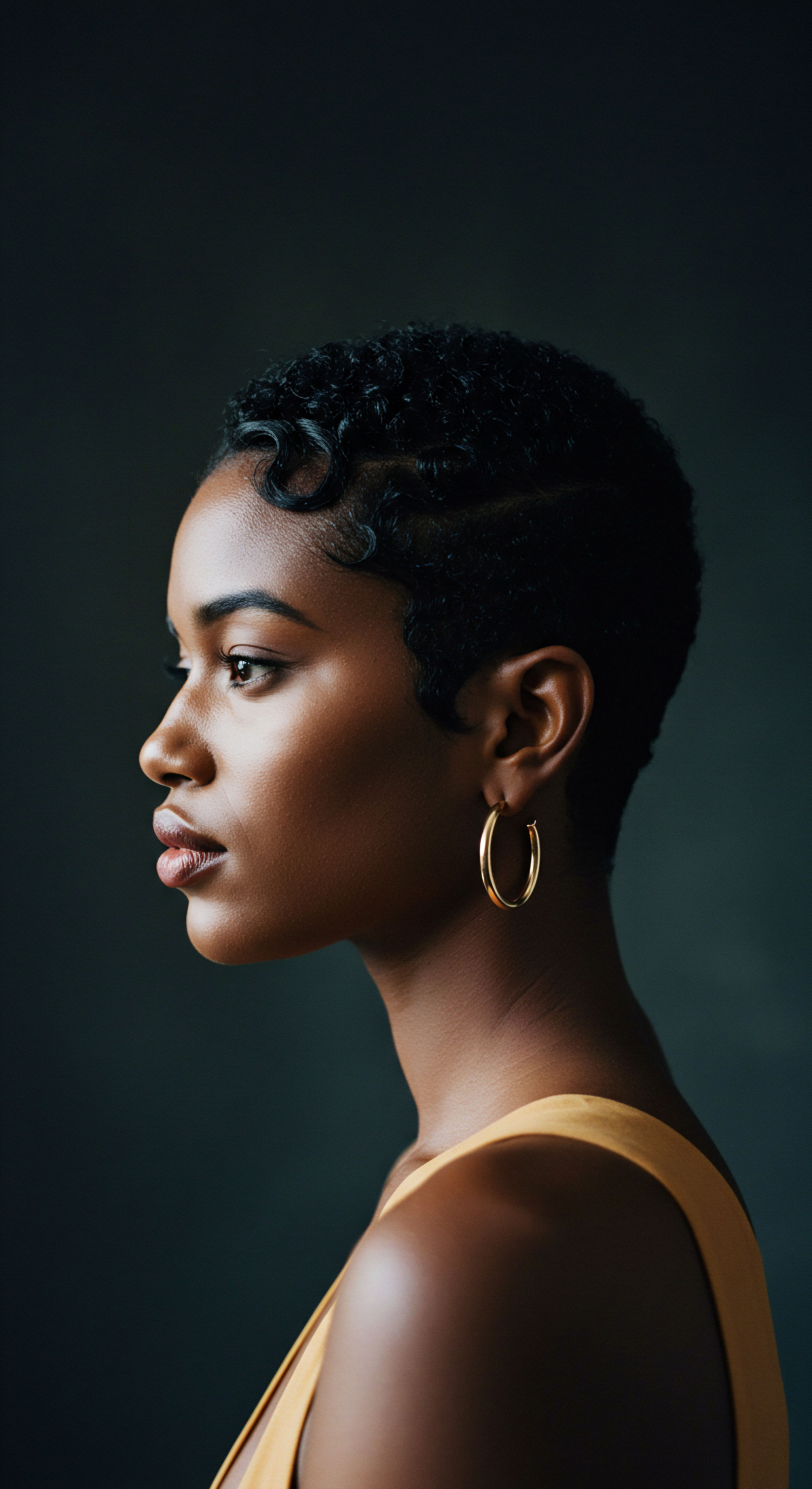
Does Acidic Preparation Influence Curl Memory?
Many natural dyes, particularly henna, require an acidic liquid for dye release. Common choices include lemon juice, apple cider vinegar, or acidic teas. This acidity helps the pigment molecules, like lawsone in henna, become available to bind with the hair’s keratin. While this is essential for color, the pH of these acidic mediums can influence the hair’s cuticle.
Hair’s natural pH is slightly acidic, typically between 4.5 and 5.5. An acid rinse helps to flatten the cuticle scales, making hair smoother and shinier.
However, excessive or prolonged exposure to highly acidic solutions, especially those with a very low pH, could potentially cause some changes. For instance, apple cider vinegar, while beneficial in diluted forms for cuticle smoothing, has been noted in some contexts to break down proteins into smaller peptides if used in high concentrations or too frequently. While this effect is typically associated with extreme amounts and might not directly alter the disulfide bonds of a curl, it could subtly impact the cuticle’s integrity or the hair’s protein balance, indirectly affecting how a curl forms and holds its shape. This highlights the importance of dilution and moderation in preparing natural dye mixes.
The mechanical application of natural dyes, alongside the pH of their preparation, can temporarily influence curl appearance.
A study on the morphological effect of henna on hair, using Scanning Electron Microscopy (SEM), showed a “positive impact on the cuticula pattern and on the diameters of the examined samples, after henna application.” The study also observed that “cuticles lifting up decreases, with a general healthy appearance of the hair” after henna application. While this research does not directly address curl pattern, a smoother, more uniform cuticle can certainly influence how a curl reflects light and how strands interact, potentially leading to a more defined or less frizzy appearance, which might be perceived as a subtle change in curl presentation.

After the Color Kiss
The care routine following a natural dye application is just as significant as the application itself. Proper conditioning and moisturizing are paramount to maintaining curl integrity. Natural dyes, while generally gentle, can sometimes leave hair feeling a bit dry, especially if the dye mixture itself was not adequately hydrating or if acidic components were used. Hair that lacks moisture tends to lose its curl definition, appearing dull and prone to frizz.
Using deep conditioners, leave-in moisturizers, and gentle styling products after coloring helps to replenish hydration, smooth the cuticle, and encourage the curls to spring back to their natural shape. The practice of gentle detangling and air-drying or diffusing with minimal manipulation also supports the curl’s inherent structure. The perception of curl alteration might, in some instances, stem from inadequate post-dye hydration rather than a permanent change to the hair’s molecular architecture. Many users of henna, for example, report that while their curls might initially feel a bit stiff or stretched, with consistent moisturizing, their curl pattern returns to its usual vibrancy.
| Natural Dye Ingredient Henna (Lawsonia inermis) |
| Primary Color Imparted Red-orange to auburn |
| General Hair Properties Coats hair, adds strength, shine, can temporarily stiffen strands. |
| Natural Dye Ingredient Indigo (Indigofera tinctoria) |
| Primary Color Imparted Blue-black (often used with henna for browns/blacks) |
| General Hair Properties Deposits color, can add weight, generally not used alone on light hair. |
| Natural Dye Ingredient Amla (Emblica officinalis) |
| Primary Color Imparted No direct color, often used as an additive |
| General Hair Properties Conditions, adds shine, can help maintain curl pattern when used with henna. |
| Natural Dye Ingredient Cassia Obovata (Senna italica) |
| Primary Color Imparted Golden to blonde (on light hair), conditions |
| General Hair Properties Adds shine, volume, mild conditioning, minimal color on dark hair. |
| Natural Dye Ingredient Walnut Hulls (Juglans regia) |
| Primary Color Imparted Brown to dark brown |
| General Hair Properties Can add darker tones, contains juglone pigment. |
| Natural Dye Ingredient Understanding the unique attributes of each plant allows for tailored care. |
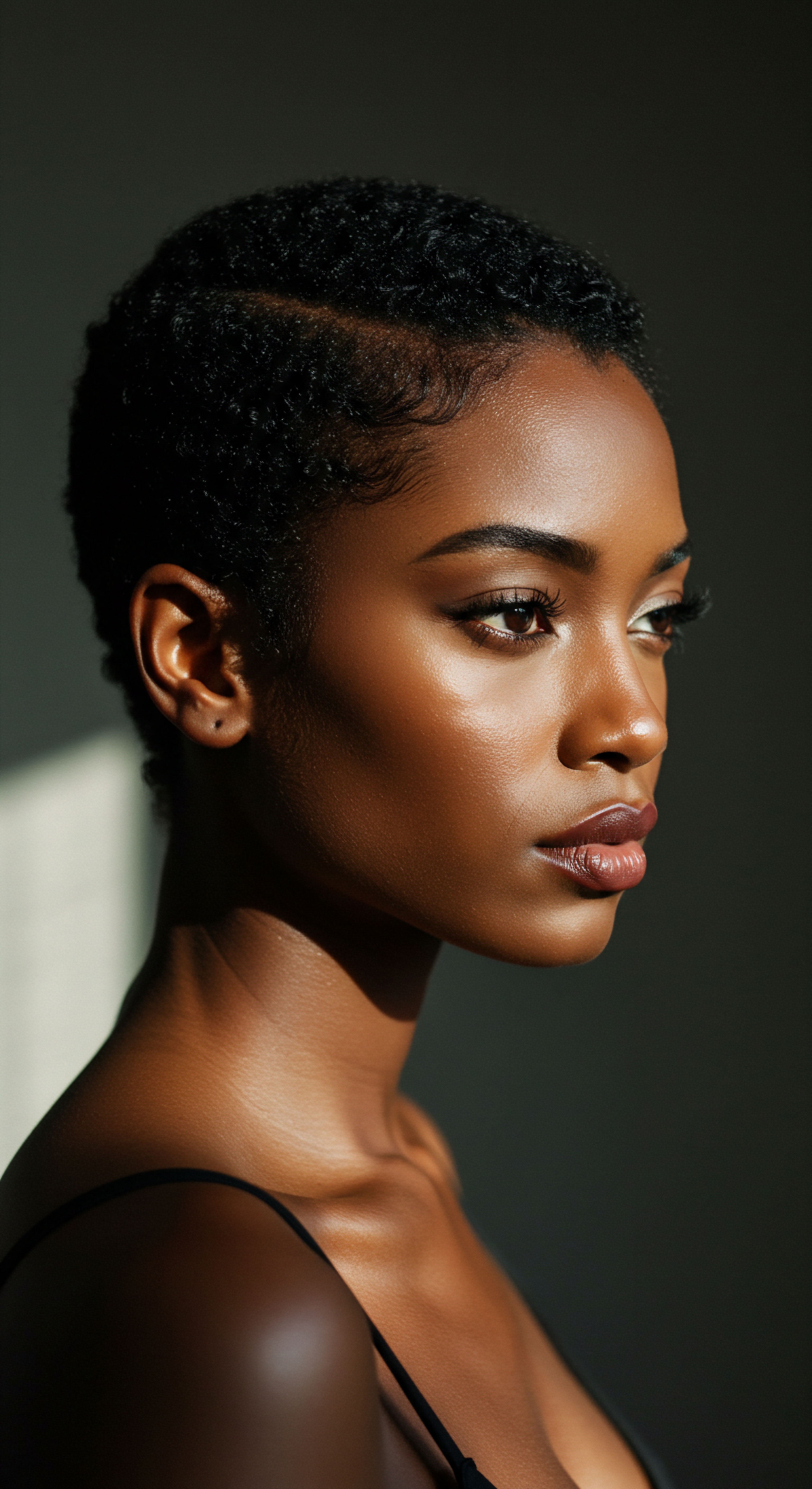
Relay
Our exploration now moves beyond the immediate application, delving into the more subtle, long-term conversations between natural dyes and the very fabric of textured hair. This section asks us to consider the deeper currents, the ways in which science, cultural heritage, and individual hair experiences converge to answer whether natural dyes truly alter the curl’s inherent blueprint. The answer, as with many aspects of textured hair care, resides in a realm of interconnectedness, where surface interactions can subtly influence perception and cumulative effects shape the hair’s ongoing story.

Beyond the First Hue
The initial interaction of natural dyes with hair is largely superficial compared to oxidative chemical dyes. Natural pigments, particularly those from plants like henna, primarily deposit onto the hair’s cuticle and outer cortical layers. This deposition can increase the hair shaft’s diameter, a finding supported by microscopic studies. For instance, a 2020 study using Scanning Electron Microscopy (SEM) to evaluate hair dyed with Lawsonia inermis (henna) powder found a “positive impact on the cuticula pattern and on the diameters of the examined samples, after henna application.” The quantitative analysis showed that the mean diameters of hair fibers increased after henna application.
This slight increase in individual strand thickness, while not changing the actual helical structure of the hair, can add weight and rigidity to the strands. For some curl patterns, particularly those with finer strands or looser waves, this added weight can lead to a perceived loosening or stretching of the curl. The individual curls might clump together differently, or appear less springy, simply due to the physical coating and increased mass of the hair.
It is a subtle shift, a rebalancing of forces, rather than a fundamental restructuring of the disulfide bonds that define the curl’s true shape. These bonds, the strong anchors of hair’s architecture, are not typically broken by natural dyes. Chemical processes like perms or relaxers are designed specifically to break and reform these bonds, thereby permanently altering the curl pattern. Natural dyes, operating without such harsh chemical agents, preserve the integrity of these foundational structures.
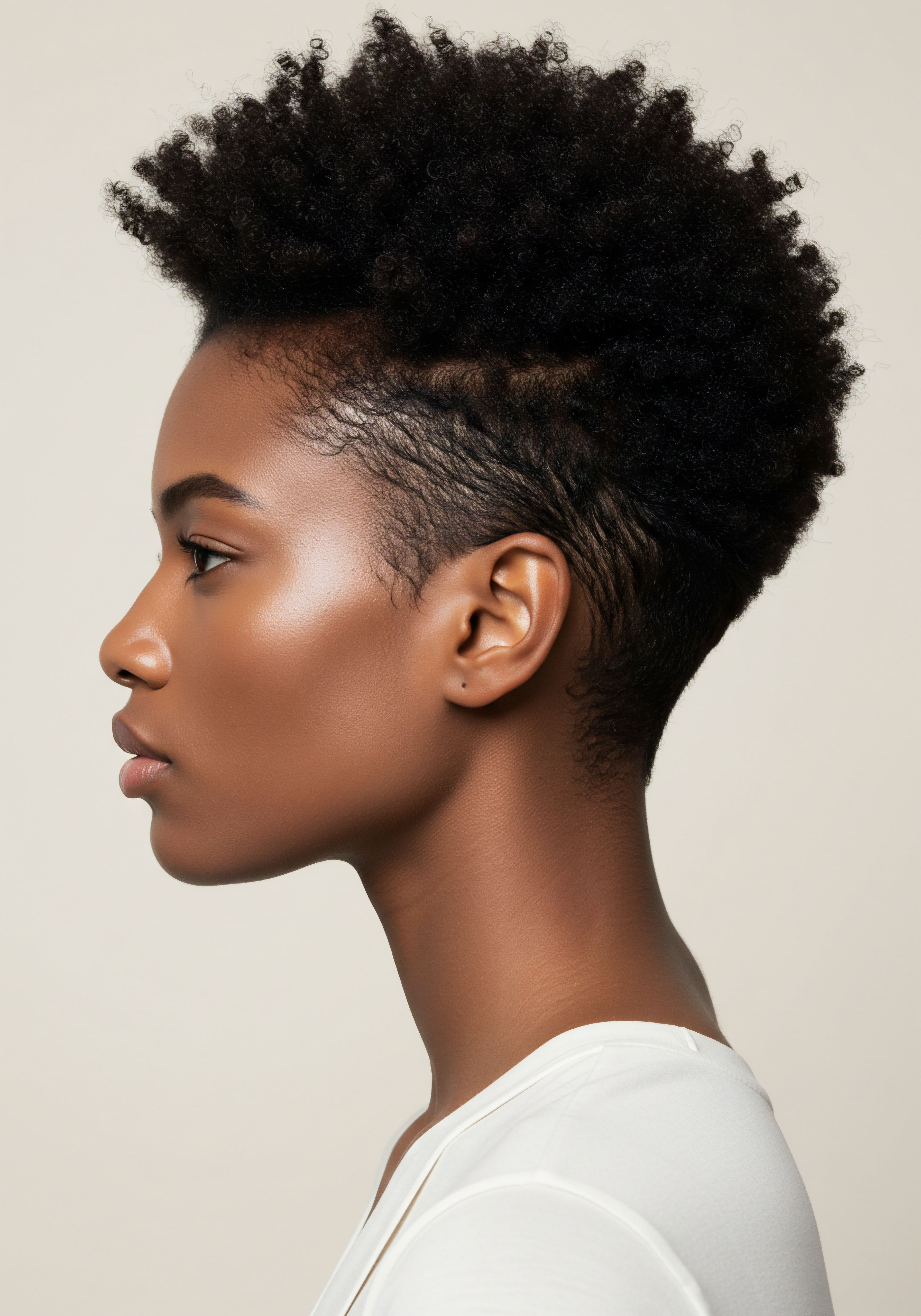
How Does Hair Porosity Shape Dye Interaction?
Hair porosity, which refers to the hair’s ability to absorb and retain moisture, plays a significant role in how natural dyes interact with the hair shaft and, consequently, how the curl pattern might appear afterward. Hair with Low Porosity has tightly packed cuticle scales, making it resistant to moisture and product absorption. Natural dyes may have a harder time penetrating even the outer layers of low porosity hair, leading to less dramatic color results and potentially less perceived change in curl pattern.
Conversely, High Porosity hair, with its raised or damaged cuticle scales, readily absorbs moisture and products. This can mean natural dyes penetrate more easily and deeply into the outer cortex, leading to more intense color. However, this openness can also mean the hair is more prone to losing moisture, which can affect curl definition.
The dye, settling more significantly within the opened cuticles, might contribute to the added weight or stiffness that can influence how high porosity curls present. Medium porosity hair, with its balanced cuticle, tends to absorb dyes well and retain color effectively.
The interplay between dye deposition and porosity underscores that the perceived alteration of curl pattern is often a physical and hydration-related phenomenon, rather than a chemical restructuring of the hair’s inherent shape. A hair strand that is well-moisturized, regardless of dye application, will generally exhibit its most defined curl. When hair becomes dehydrated, curls can lose their spring and appear looser or more chaotic.
- Low Porosity Hair ❉ Cuticles are tightly closed, making dye absorption difficult. Minimal perceived curl alteration due to less deposition.
- Medium Porosity Hair ❉ Balanced cuticles allow for good dye absorption and retention. Curl pattern generally remains consistent.
- High Porosity Hair ❉ Open cuticles absorb dye readily but can struggle with moisture retention. May experience a more noticeable, though temporary, shift in curl appearance due due to added weight or stiffness.

Ancient Wisdom and Modern Strands
Across cultures and centuries, hair color has served as a powerful symbol of identity, status, and beauty. From ancient Egypt, where henna signified vitality and youth, to Roman women using saffron for blonde hues, and in Asian cultures where black hair was a symbol of strength and respect, the act of altering hair color carries profound cultural weight. These traditions often utilized natural pigments not only for their color but also for their perceived conditioning and strengthening properties. For instance, henna has been historically used to strengthen hair and add shine, a benefit still recognized today.
This historical context reminds us that the relationship between hair and natural colorants is not solely about aesthetics. It is a holistic connection that considers the hair’s health, its appearance, and its cultural significance. The perception of curl alteration might, in some cases, be intertwined with the overall condition of the hair and the individual’s long-standing hair care practices. When hair feels healthier, stronger, and has increased sheen, any subtle shifts in curl definition might be viewed through a different lens, perhaps as an acceptable byproduct of a nourishing treatment.
Natural dyes primarily coat the hair, increasing strand diameter and weight, which can subtly alter curl appearance without breaking core bonds.
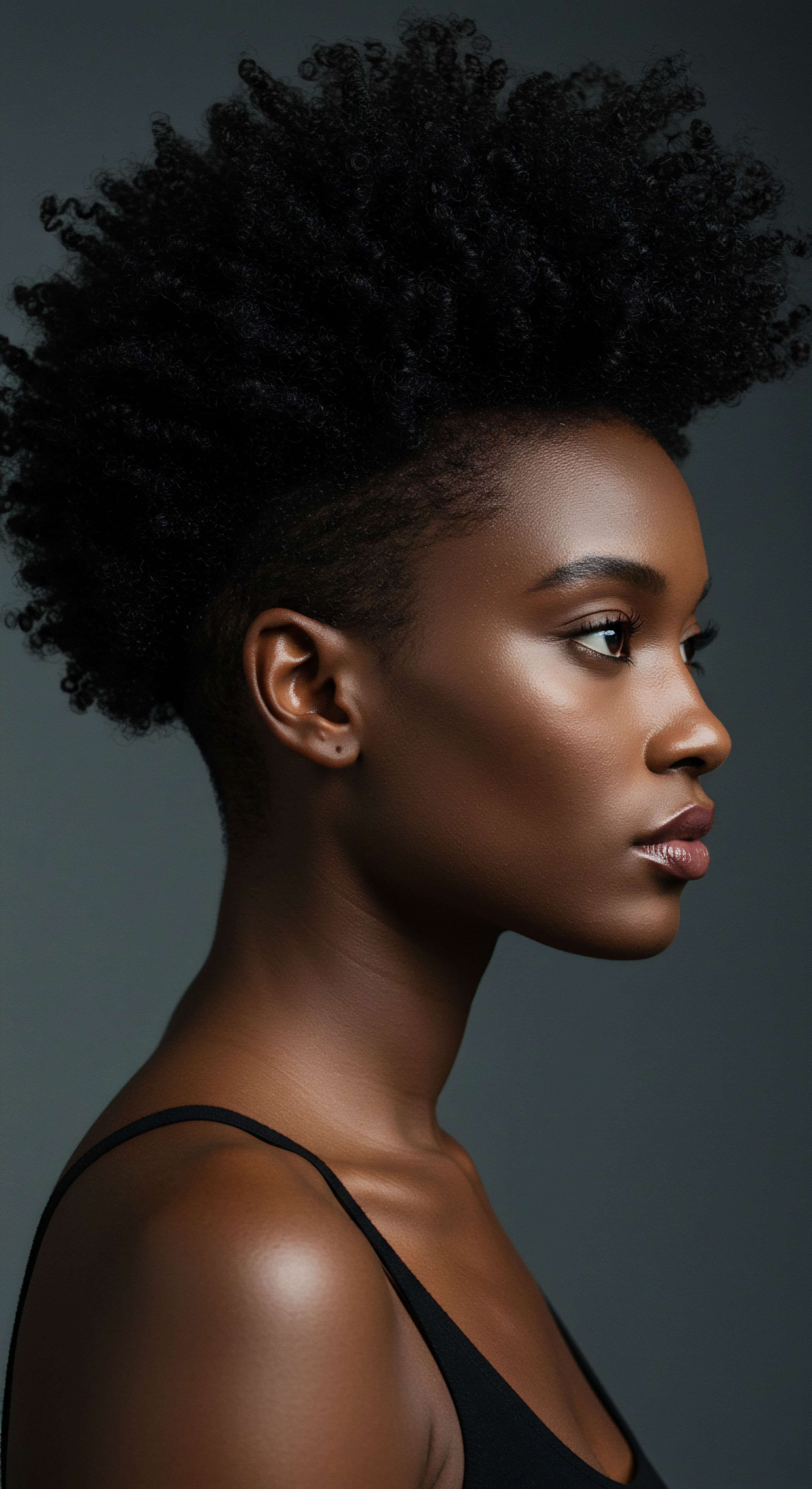
Do Natural Dyes Truly Alter the Curl’s Structural Blueprint?
The core question of whether natural dyes permanently alter the hair’s structural blueprint, meaning the disulfide bonds that set the curl, is consistently met with scientific consensus ❉ generally, no. Unlike chemical perms that intentionally break and reform these bonds, natural dyes operate on a different principle. Their molecules typically adhere to the outer layers of the hair, or, in some cases, diffuse into the outermost regions of the cortex without causing the significant chemical reactions needed to change the hair’s internal protein structure.
The perception of curl loosening often stems from mechanical factors or the temporary stiffening and added weight of the dye on the hair shaft. For example, a 2015 anecdotal report on a popular natural hair blog noted that henna “changes the weight of the strands through plant deposits although it is not changing the chemical structure of the strand.” The author observed that “henna also fills in rough spots on the cuticle and makes hair softer and smoother for many who use it,” and that this “slight stretching + clumping” can give the appearance of looser curls, particularly for 4C hair. This perspective highlights that the visual effect is often a consequence of physical changes to the hair’s surface and bulk, rather than a fundamental re-patterning of the curl itself.
Further, research indicates that the presence of amla (Indian gooseberry) in henna mixes can help maintain the natural curl pattern. Amla is often used as an additive to henna, and some in the textured hair community report that it helps to mitigate any perceived curl loosening. This suggests that careful formulation of natural dye mixtures can influence the outcome, supporting the idea that the effects are often manageable and not irreversible structural changes. The scientific understanding reinforces the notion that natural dyes are a gentle way to color, respecting the hair’s intrinsic architecture while offering a beautiful spectrum of hues.

Reflection
The journey through the nuanced world of natural dyes and textured hair reveals a story of gentle interaction, where the earth’s pigments whisper color onto our strands rather than reshaping their very spirit. We have seen that the spirals and coils, those magnificent expressions of our heritage and individuality, hold their true form within the deep, strong bonds of their architecture. While the touch of natural colorants can certainly influence the hair’s presentation – adding a veil of weight, smoothing the cuticle, or momentarily stretching the spring – these are often temporary dances on the surface, rather than a fundamental re-choreography of the curl’s inherent rhythm. The wisdom of generations, coupled with scientific observation, encourages us to approach hair care as a symphony of understanding and respect, allowing our crowns to shine in their authentic, vibrant glory.
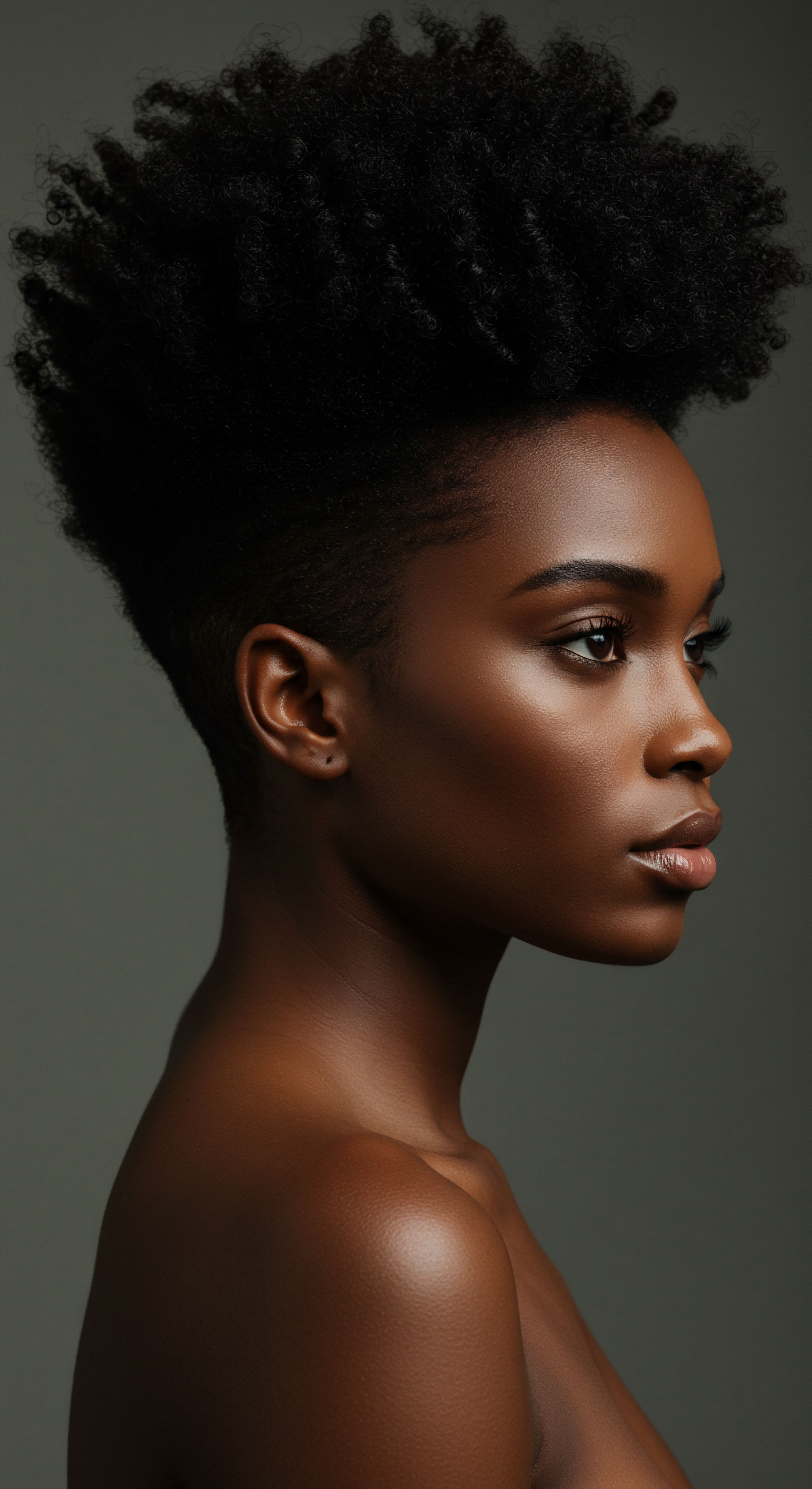
References
- Recent Advancements in Natural Plant Colorants Used for Hair Dye Applications ❉ A Review. Molecules, 2022.
- PSA ❉ don’t use apple cider vinegar (ACV rinse) on your hair ❉ r/curlyhair – Reddit, 2015.
- How Hair Porosity Affects Hair Dye Results | The Ohio Academy of Science – ProjectBoard.
- What Is Your Hair’s Porosity Level? – Splat Hair Color.
- The cultural origins of hair colour ❉ A symbol of identity and expression – Indulgexpress, 2025.
- Chemistry of Wellness ❉ Hair and Hair Care.
- When Hair Lies ❉ How Porosity Affects Color Absorption and Styling Longevity, 2025.
- Is A Hair Rinse Important? | APPLE VALLEY NATURAL SOAP BLOG, 2019.
- AF Technical | Let’s Talk Hair Porosity – Arctic Fox, 2020.
- CHAPTER 20 ❉ CHEMICAL TEXTURE SERVICES THE STRUCTURE OF THE HAIR.
- Genomic Variation in Textured Hair ❉ Implications for Holistic Hair Care – Hexis Lab.
- The Extraordinary History of Hair Color – Byrdie, 2024.
- Ten Tips to Improve Your Hair’s Porosity | The Shade.
- Hair Dye History Timeline ❉ From Natural Dyes to Neon Shades – YouTube, 2025.
- History Of Hair Coloring | Campus.edu, 2024.
- What Are Hair Bonds? – OLAPLEX Inc. 2024.
- Why Your Hair Loves an Acid Rinse? – Nyponros.com, 2018.
- The cultural significance of hair color ❉ A journey through history, 2024.
- SCIENTIFIC study I found on henna for hair! soo happy! Great research that shows HOW henna works on hair – Reddit, 2021.
- Disulfide Bonds in Hair.
- Acid rinse ❉ what it is and how to do it to have glowing and tidy hair – La Saponaria.
- Microscopic comparison of hairs treated with different commercial brands of henna | Request PDF – ResearchGate.
- Top 5 Benefits of Switching to Organic Hair Color – Cultivator Natural Products, 2024.
- Application of phycocyanin from Arthrospira (Spirulina) platensis as a hair dye – Frontiers.
- Henna and amla help ❉ r/HaircareScience – Reddit, 2019.
- Cosmetics and Personal Care | Hair Bleaching, Coloring and Shaping – Evonik Industries.
- Formulation and evaluation of hair dye shampoo using Genipa americana L. (Huito) fruit extract, 2024.
- Understanding the pH of Keratin Treatments ❉ How pH Levels Impact Your – Kera Mane, 2024.
- The Origins of Dying Hair – Shape Hair & Beauty Lewes.
- Scanning Electron Microscopy Approach for Evaluation of Hair Dyed with Lawsonia inermis Powder ❉ in vitro Study, 2020.
- Mechanisms of impairment in hair and scalp induced by hair dyeing and perming and potential interventions – Frontiers.
- Risks of Hair Dyes | Chemical vs. Plant-Based Options – Doctor Green Life, 2023.
- Thiol-Enhanced Interfacial and Internal Deposition of Metal–Polyphenol Networks for Permanent Hair Dyeing | ACS Biomaterials Science & Engineering.
- Chapter 4 ❉ Science and Microscopy ❉ Microscopy of Henna The microscopic structures of a henna leaf.
- Henna as a Hair Dye ❉ A Current Fashion Trend with Ancient Roots – Karger Publishers, 2019.
- History Of Hair Dye – Zala Hair Extensions, 2024.
- Microscopic analysis of some Indian henna brands – Reddit, 2024.
- Hair colouring with plant dyes – Biome, 2022.
- Natural pigments from six species of Thai plants extracted by water for hair dyeing product application | Request PDF – ResearchGate, 2025.
- History of Hair Color – Goldwell.
- Can Henna Loosen Your Curl Pattern? – CurlyNikki, 2021.
- A Study of Hair Dye using Henna and Haematoxylon Campechianum Dye – ResearchGate.
- The Ultimate Guide to 100% Plant based Hair Color – Spice Root, 2024.
- Henna and Me ❉ 6 Months Later | The Kink And I, 2015.
- Hair Coloration with Natural Dyes and Pigments – ResearchGate.
- New insights into red plant pigments ❉ more than just natural colorants, 2020.
- Why should you choose plant based hair colour? – Indus Valley, 2022.
- Recent Advancements in Natural Plant Colorants Used for Hair Dye Applications ❉ A Review.